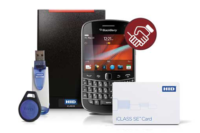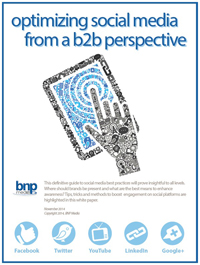I recently traveled to ASSA ABLOY’s U.S. headquarters in New Haven, Conn. The “grand tour” experience included a walk through the company’s Innovation Showroom, an impressive showcase of products set up to demonstrate a vast array of options ranging from exit devices designed to be both visible and audible in a fire; to vending machine solutions using intelligent keys; multiple wireless options; PoE devices; residential locks; bullet-, hurricane- and tornado-proof doors; and energy efficient solutions. I also conducted an exclusive interview with Martin Huddart, president, Access and Egress Hardware Group, ASSA ABLOY Americas. Ispoke with Huddart about some of the most talked about trends in access control, as well as some new developments “in the works” for the company.
SDM: What do you see as the most important trends over the past decade in the access control/lock market and how has ASSA ABLOY evolved to meet them?
Huddart:If you were managing a building 10 years ago and thinking about security on the perimeter and interior, your only two choices would have been online access control, typically for the perimeter and mechanical locks for the interior. It was choice “A” and choice “B,” and that was how it was. They were deployed by different people and had very different price points and security levels.
What has happened in the last 10 to 15 years is the release of a range of new options. Some of the big players, including ASSA ABLOY, decided to do things that weren’t traditional online wired products, but still offered more security than mechanical locks. Wireless in particular has been a transformational technology in our industry. ASSA ABLOY offers a continuum of products from mechanical to wireless to online and beyond. Data on card is a new technology for us, leveraging smart card technology to create really cost effective security solutions. These are some of the trends in access control and how the market is changing. We are trying to lead the change. That is ASSA ABLOY’s story. Our strength is in giving end users and integrators choices to maximize the impact of their security budget.
SDM: What are the latest developments in wireless technology?
Huddart: Wireless is becoming mainstream. Our latest generation of locks offers two choices: Our Wi-Fi locks are IP friendly and the Aperio series is panel friendly.
Wi-Fi as a technology is mature and in almost every building today. It is easy to tap into the IP infrastructure that is already there so you don’t need to add extra lock infrastructure. Because Wi-Fi is not a battery-friendly technology, the lock wakes up once or twice a day to communicate access rights and retrieve audit trails, while alarms are transmitted in real time. This is a tradeoff that many organizations are willing to make, considering a Wi-Fi lock opening could be only 20 to 30 percent of the total installed cost of a wired solution. Our IP-enabled locks have been a popular product for us and have seen huge growth since we launched them seven years ago.
If you want a transaction in real time then you might look at Aperio, which takes the last 10 feet of wire from the panel and wirelessly connects it to the opening via the Aperio hub. It gives you a very online, wired opening experience but eliminates those last few feet of wires. We have more than eight different styles of Aperio locks for all kinds of applications including drawers and server cabinets, thus extending the definition of the opening in access control.
Wireless is an uber-trend that will ultimately result in more openings connected to access control.
SDM: What are some of the new ASSA ABLOY products that you are most excited about?
Huddart: One of our newest solutions is a multi-family product offering security at a lower price point. Property managers typically have to rekey doors frequently due to turnover or lost keys. Electronic access solutions give the property the ability to know for certain which tenants and staff have accessed the apartment, but are often too expensive for this vertical. Up until now there were not great options. Yale now has cloud-based hosted solutions designed for multi-family locations with software as easy to use as Facebook and locks custom-designed for this application.
This solution will use the data on card architecture, where the access rights are actually written on the card itself and can be updated at the front door with minimal infrastructure. For example, the front door reader can modify access to the offline lock on the gym if the system knows that the rent is overdue. Data on card is a sweet spot for multi-family.
The nexTouch lock is one of the commercial grade locks that has this data on card capability but it comes with a very cool twist. By adding a Z-Wave or Zigbee radio compatible with many of our partner burglar alarm panels, you can use this same lock to provide real time access control in a small business setting. We will launch these multi-family and small business solutions late this year.
Another really exciting breakthrough for us is in the area of sustainable electronic access control in the form of the EcoFlex electrified mortise locks and EcoPower power supplies. The initial problem we were solving with EcoFlex was to design a lock with maximum design flexibility. The resulting design had an inherently lower power draw —about 96 percent lower in some applications. We quickly discovered the side benefit of lower power was surprisingly strong as owners were looking to have greener buildings with better LEED scores. Engineers at Securitron looked at our EcoFlex lock and realized that a low-power lock could be powered by a revolutionary new type of power supply they call EcoPower. Looking forward, we expect to see other EAC components be optimized for power consumption building on the “Eco EAC” trend we started.
SDM: If you had a crystal ball what do you think you would see for some of these technologies going forward five to 10 years?
Huddart:The opening with awareness is a technology for the future — we call it the highly intelligent opening, or Hi-O. Think about a car today where the engine warning light comes on telling you to service your car before it lets you down completely by the side of the road. We could put sensors and intelligence in the components around the door to communicate problems prior to a system failure or even predict when the opening might fail. Hi-O is at the concept stage right now in the U.S. market but we expect this will take hold in the future.
I believe eventually the mechanical lock will die and all locks will have security awareness. That trend is in its early stages now, with 10 percent of locks sold in the industry having some sort of intelligence. At some point, it will be more cost effective for every lock to have basic electronic security features which can be turned on when desired by the user.
Personally I am most passionate about mobile credentials. We are never more than five feet from a mobile device. Five to 10 years from now I believe we will be using phones to open doors more than any other type of credential. Non-traditional credentials will play a huge role in the market. Perhaps your phone or wearable will know your heartbeat, your walking pace and gait, and automatically know it is you and not someone else carrying your device. It will also know where you are in the building and help you escape in an emergency. Phone-based credentials will be more convenient to use and distribute.
The key to moving this technology along is we can’t go backwards in usability even if we have gone forward in security. Ease of use is critical in any new technology. The ability to send keys over the air really changes the game as we are seeing in the hospitality industry. Who doesn’t want to skip the line at the front desk and use your phone to go straight to your room? I imagine our EAC software partners will think of new creative ways to leverage this technology in the commercial security world soon.
ASSA ABLOY Will Feature Mobile, Cloud & Green Products at ASIS 2015
Mobile Access Support — ASSA ABLOY Group brands Corbin Russwin and SARGENT will feature HID Mobile Access support across a broad range of access control locks. Mobile-enabled locks from ASSA ABLOY Group brands are fully compatible with HID Global iCLASS SE and Seos cards as well as multiCLASS SE readers configured for HID Mobile Access.
Next-Generation Solutions for Multi-Family and Small Business Markets — Yale Locks & Hardware introduces a suite of next-generation solutions for the multi-family and small business markets that offer flexible, scalable lock management tailored specifically for the needs of these market segments. The small business solution includes the same hardware plus integration with interactive service platforms, such as those from Alarm.com, DSC, Honeywell and iControl.
Sustainable Access Control — ASSA ABLOY showcases its range of sustainable access control solutions, including EcoFlex and EcoPower. When used together, the EcoFlex and EcoPower solution is GreenCircle Certified to reduce power consumption up to 99 percent in both fail-safe and fail-secure applications.
Visit ASSA ABLOY at ASIS in booth 2815 for these and other products, including a preview of other energy efficient products coming soon.







